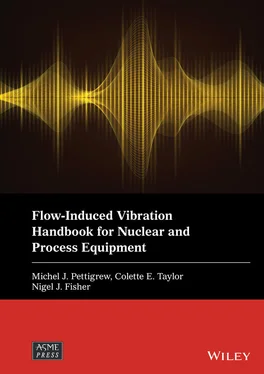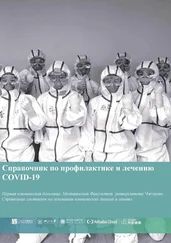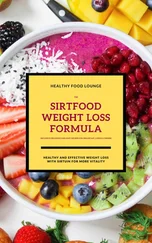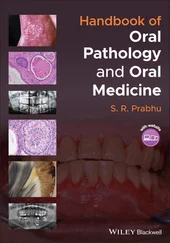Registered Office
John Wiley & Sons, Inc., 111 River Street, Hoboken, NJ 07030, USA
Editorial Office 111 River Street, Hoboken, NJ 07030, USA
For details of our global editorial offices, customer services, and more information about Wiley products visit us at www.wiley.com.
Wiley also publishes its books in a variety of electronic formats and by print-on-demand. Some content that appears in standard print versions of this book may not be available in other formats.
Limit of Liability/Disclaimer of Warranty While the publisher and authors have used their best efforts in preparing this work, they make no representations or warranties with respect to the accuracy or completeness of the contents of this work and specifically disclaim all warranties, including without limitation any implied warranties of merchantability or fitness for a particular purpose. No warranty may be created or extended by sales representatives, written sales materials or promotional statements for this work. The fact that an organization, website, or product is referred to in this work as a citation and/or potential source of further information does not mean that the publisher and authors endorse the information or services the organization, website, or product may provide or recommendations it may make. This work is sold with the understanding that the publisher is not engaged in rendering professional services. The advice and strategies contained herein may not be suitable for your situation. You should consult with a specialist where appropriate. Further, readers should be aware that websites listed in this work may have changed or disappeared between when this work was written and when it is read. Neither the publisher nor authors shall be liable for any loss of profit or any other commercial damages, including but not limited to special, incidental, consequential, or other damages.
Library of Congress Cataloging-in-Publication Data applied for:
ISBN: 9781119810964
Cover Design: Wiley
Cover Images: © iStock\olegback
Excessive flow‐induced vibration causing failures by fatigue or fretting wear must be avoided in process and nuclear components. That is the purpose of this handbook. In this book, the term process components is used generally to describe nuclear reactor internals, nuclear fuels, piping systems, and all shell‐and‐tube heat exchangers, including nuclear steam generators, power plant condensers, boilers and coolers.
There are already a number of good books on flow‐induced vibration. So, why another one? This handbook is to help engineers to design, operate, and diagnose heat transfer equipment. The emphasis in this handbook is on two‐phase flow‐induced vibration. Despite the fact that roughly half of all heat exchanger equipment operates in two‐phase flow, previous flow‐induced vibration texts have provided limited guidance regarding vibration induced by two‐phase flow. The prediction of fretting‐wear damage is another important priority. The state of the art is presented in the design guidelines, figures and tables. The use of these design guidelines is illustrated with example calculations. To assist students and new design engineers, the calculations are supplemented and presented with more explanation in an appendix.
Largely, this handbook is the outcome of some 40 years of research and development at the Canadian Nuclear Laboratories. The emphasis of this book is the presentation of design guidelines based on extensive analysis of the literature and, in particular, on experimental data obtained in the field and at the Canadian Nuclear Laboratories in Chalk River.
We believe that this book will be useful to engineering design firms in the nuclear, petrochemical and aerospace industries, graduate schools in mechanical engineering and technical support groups in operating nuclear and petrochemical plants. This handbook is not a textbook, although it could be used as a resource in a graduate course. We also hope that this book will help to stimulate further research in the area of two‐phase flow‐induced vibration.
Michel J. Pettigrew
Colette E. Taylor
Nigel J. Fisher
The authors would like to recognize the institutions and colleagues who have provided permissions, support and inspiration to this project. We begin by recognizing the publishers who have kindly given permission to use copyrighted tables and figures. Rather than add the requested recognition statements to each figure, the following general statements are provided to avoid repetition.
Figures from the Congress of the Engineering Institute of Canada (EIC) reprinted with permission from the EIC.
Figures from the International Association for Structural Mechanics in Reactor Technology (IASMiRT) conferences reprinted courtesy of IASMiRT.
Figures from ANL Reports, copyright by Argonne National Laboratory, managed and operated by the University of Chicago, U.S. Department of Energy, reprinted with permission.
Figures from the Nuclear Power Safety, the Journal of Fluids and Structures, the Journal of Sound and Vibration, the Journal of Multiphase Flow and the Journal of Nuclear Engineering and Design, reprinted with permission from Elsevier.
Figures from Convective Boiling and Condensation, Oxford Publishing Limited, Oxford, GB, reproduced with permission of Oxford Publishing Limited through PLSclear.
Figures from AERE reports reproduced with the permission of UKAEA Scientific Publications.
Figures from Washington State University Reports reprinted with permission from the Washington State University Libraries.
Figures from the 8th International Heat Transfer Conference reprinted with permission from Begell House Inc.
Figures from the Journal of Heat Transfer Engineering and the Journal of Nuclear Science and Engineering, reprinted with permission of the publisher (Taylor & Francis Ltd, https://www.tand‐fonline.com/)
Figures from Atomic Energy of Canada Ltd. Reports, used with permission from AECL.
This document is based on some 40 years of research and development conducted at Chalk River Laboratories in the area of flow‐induced vibration. This technology development effort was largely supported by Atomic Energy of Canada Limited (AECL) and by the CANDU Owners Group (COG). It also received support from the Heat Transfer and Fluid Flow Service (HTFS), the Centre d’Etudes Nucleaires de Saclay (CEN‐Saclay), the Pressure Vessel Research Council (PVRC) and the Washington Public Power Supply System (WPPSS). The support of all these organizations is very gratefully acknowledged. Many people have contributed to this effort including colleagues from industry and universities. Recognizing that we will fail to acknowledge all of our partners, we have decided to name some of the key individuals and institutions.
The authors have benefited from discussions with researchers in other institutions such as F. Axisa and B. Villard, Centre d’Etudes Nucleaires de Saclay; H.G.D. Goyder, UKAEA Harwell; R.T. Hartlen, Ontario Hydro; N.W. Mureithi and many graduate students at École Polytechnique, Montreal; I.G. Currie, University of Toronto; R.J. Rogers, University of New Brunswick and M.P. Païdoussis, McGill University.
Visiting scientists, B.S. Kim, Korea Power Engineering Company Inc., Taejon, Korea; A. Yasuo, Central Research Institute of Electric Power Industry, Japan; and Z.L. Qiao, Xian Jiaotong University, China, contributed to the development of the flow‐induced vibration database.
The contributors would also like to recognize the input of colleagues from the Canadian Nuclear Laboratories throughout the past 50 years: J. Albrecht, K.M. Boucher, W.A. Cook, T. Dickinson, P. Feenstra, E.G. Hagberg, Y. Han, G. Knowles, J. Mastorakos, J. McGregor, K. Moore, J.N. Patrick, P.J. Smith, Y. Sylvestre, J. H. Tromp, M.K. Weckwerth, and T. Whan. These individuals ably assisted with construction, instrumentation and installation of various flow loops and test sections, as well as copious data analysis.
Читать дальше












